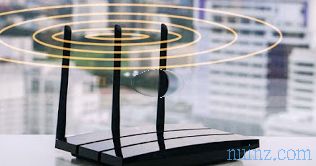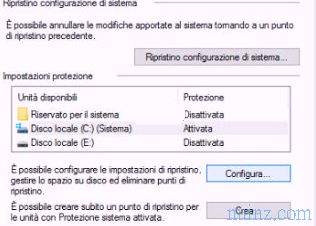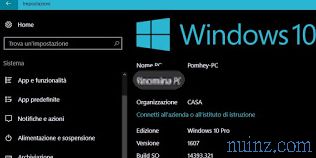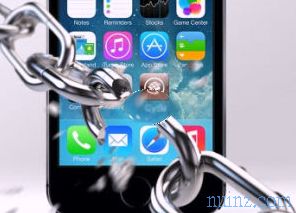If the internet does not work, instead of trying to reload the site that does not open hoping that at a certain point the situation will be solved by itself, it is better to investigate the reason and find the right solution to solve the problem of internet connection .
So let's see how to solve internet problems in case of no connection through a series of simple and other lesser known ways but equally within everyone's reach.
The resolution methods listed below are valid whether you connect to the internet via a LAN cable, either via wifi, or with a USB stick.
1) Preliminary checks
The first thing to do in this sense is to check that the cables are connected correctly, that the router is turned on and not signaling anomalies (red lights or other) and that the reception of the wifi signal is at least good.
While this step may seem obvious, it's actually easy for the network cables to be disconnected or loose, both for the computer and the router, or for Wi-Fi reception to be inadvertently disabled on laptops.
In Windows 10, go to Settings> Network and Internet> Wi-Fi, check the available networks and click on Connect on the name of the recognized wifi network.
Also make sure that the physical Wi-Fi switch on your laptop is turned on. (Usually a light indicates when it is on.)
Make sure Windows 10 airplane mode is turned off (in Settings> Network and Internet> Airplane mode ).
READ ALSO: Solutions for wifi and router connection problems
2) Check if the site is online
The second fundamental step, if you are trying in vain to access a particular website, is to check that the site is not offline and that the other sites are functional.
3) Generate the network status report
The wireless network report is a really useful Windows tool to understand if the wifi network has had problems in the last 2 days, highlighting every possible problem.
This report can be easily read by those with some experience or otherwise it can be transmitted and read to the connection's customer support.
In the Start menu search box, type cmd, then right click on Command Prompt and select Run as administrator.
At the command prompt, type netsh wlan show wlanreport .
The wlan-report-latest.html file can be opened on the web browser and is saved in the C: \ ProgramData \ Microsoft \ Windows \ WlanReport folder .
4) PING command
One of the first things to try when the internet connection doesn't seem to work properly is the ping command.
Open a command prompt window from the Start menu (as seen in step 2), type ping google.com or ping navigaweb.net and send to see if there is an answer.
This command sends several packets to the specified address.
The web server responds to every packet it receives; if there is no packet loss and the time of each packet needed is rather low, then the internet connection is working and the problem is at the browser level.
If instead there is packet loss (in other words, if the web server has not responded to one or more of the packets sent), this may indicate a network problem.
If the website takes too long to respond, the network works but is slow.
The latter problem can be caused by the site itself (unlikely if the same problem occurs on multiple websites), by your Internet service provider, or by the router.
Still using the PING command, you can check if the gateway is reachable .
If it is not, if all the connections are correct and if the router is not broken, then you must contact the support of the network provider.
Run the command prompt as administrator (as seen in step 2) and type the ipconfig command first.
Look up the IP address of the default gateway and write it down (for example: 192.168.1.1)
Still at the prompt, type ping and press Enter (for example ping 192.168.1.1) and press Enter.
The ping does not respond, call the call center.
5) Restart the wireless router and modem
This is the easiest method, but sometimes it can be very effective.
The modem is the device that communicates with the Internet service provider (Telecom, Fastweb, Infostrada etc.), while the router shares the connection between all the computers and other network devices in the house.
In some cases, modems and routers are the same device.
Disconnect the power cable for the router and the modem cable from the power source (and if there is a battery, remove it).
Then wait at least 30 seconds before reconnecting the modem / router and turning it on.
If they were two different devices, reconnect the modem first, then when the lights stop flashing, reconnect the router.
After restarting the router, also make sure that there are green lights flashing.
If you see a steady light on the router, usually orange, it means that there is a problem inside the network.
If the orange light appears on the modem, all you can do is call the network provider's call center and point out the situation that depends on them.
READ ALSO: Red light on the modem (no Internet): what to do before calling for assistance
Also try to reset the router to factory settings.
To check if the problem is really with the router or not, you can connect the computer via Ethernet cable directly to the modem.
If the connection is now functioning properly, the router may have to be changed or is poorly configured.
See how to configure your wireless router making sure your network is active in the settings.
6) Perform network diagnosis on Windows 7, 8 and Windows 10
The automatic resolution of network problems in Windows 7 should not be underestimated because it highlights with some clarity where the possible problem lies.
Go to Start -> Control Panel -> Network and Internet -> Network and Sharing Center, click on " Change adapter settings ", right click on the active network card, be it a LAN or a wifi network and click on " Run Diagnosis ".
The Windows tool will scan network components and attempt to automatically resolve any configuration errors on the computer.
If the problem depends on your internet connection provider, then it could give useful information in case you go to call the call center as " The DNS server is not reachable " or " the router is not reachable ".
In Windows 10 there is an automatic connection diagnosis and recovery tool.
This can be found from the Start menu -> Settings> Network and Internet, on the right side of the " Network status " screen.
In Windows 10 you can also do a reset of the network card, from the same screen, by clicking on Reset connection .
7) Complete network restore
The steps for manual network recovery are as follows:
Reset the TCP / IP stack
Release the IP address
Renew the IP address
Reset the DNS client resolver cache
These network commands must be executed in a command prompt window as administrator (see point 2), pressing enter after each one.
Then type the commands in this sequence:
- netsh winsock reset
- netsh int ip reset
- ipconfig / release
- ipconfig / renew
- ipconfig / flushdns
Then restart your computer.
This methodology was explained in a guide on how to solve the problem of limited or absent connectivity, and errors on sockets, LSPs and TCP / IP Stack.
almost all the operations of this article can be performed quickly thanks to a free tool for Windows PC called NetAdapter Repair .
This program has buttons to perform the following operations:
- PING of IP addresses and DNS servers
- change the Mac address of the system.
- WinSock and TCP / IP repair
- Reset VPN and proxy settings
- Windows Firewall repair
- Release and renew the DHCP address
- Delete the Hosts file
- Clear static IP settings (enable DHCP)
- Change DNS using Google's
- Flush DNS Cache
- Clear Route / ARP table
- Reload and release NetBios
- Enable LAN cards
- Enable wireless cards
- Reset the Internet, Security and Privacy options
- Set the default Windows network services.
8) Network Driver Reset
If you have installed a network adapter driver or an update for it (or a Windows 10 update), it may be helpful to roll back the driver to an earlier version.
In the search box on Start meu, type Device Manager, then select Network adapters > name of the network card.
Press and hold (or right-click) the network card, then select Properties.
In Properties, select the Driver tab and press the Roll Back Driver button.
Reboot your computer.
You can also try reinstalling the network card driver .
To do this, following the procedure described above, in Properties> Drivers press on Uninstall device and restart the computer.
9) Virus check
If the internet works on all home computers while there is no connection on one, the problem is surely a software one.
It could be caused by a virus or some type of malware or with the browser.
Do a virus scan on your computer, try to install another browser other than the current one.
READ ALSO: Remove viruses from Chrome and Firefox when slow or with too much advertising
10) Temporarily disable the firewall
Uninstall or disable any Firewall programs (each antivirus suite also has a firewall) which can be poorly configured.
Furthermore you can disable the Windows firewall temporarily from the command prompt launched as administrator (always see point 2) using the command:
netsh advfirewall set allprofiles state off
To reactivate it, type:
netsh advfirewall set allprofiles state on
11) Proxy check
Then also check that a proxy is not set on Edge or Firefox and that the hosts file is clean.
To check the proxy, go to IE options, to the Network connections tab> LAN settings .
To check that the hosts file is clean, open the hosts file with the notepad by pointing to the folder C: \ Windows \ System32 \ drivers \ etc (to open it you need administrator rights).
Delete all lines that don't start with # and save.
An explanation of this file is in the guide on how to edit the hosts file.
12) DNS problems
When trying to access Google.com, the computer contacts a DNS server and asks for the IP of the Google.com address.
DNS servers are assigned by the network provider and problems can sometimes occur.
Then try to change the default DNS using, for example, Google DNS.
In another article, How to resolve if there is an error: "The DNS server is not responding".
13) Contact the call center
Finally, if nothing worked, all that remains is to contact the network operator's call center.
In another article there are all the details on how to request TIM, Wind, 3, Vodafone, Fastweb operator assistance.
READ ALSO: I can't connect to the internet; guide to correct network and navigation errors
So let's see how to solve internet problems in case of no connection through a series of simple and other lesser known ways but equally within everyone's reach.
The resolution methods listed below are valid whether you connect to the internet via a LAN cable, either via wifi, or with a USB stick.
1) Preliminary checks
The first thing to do in this sense is to check that the cables are connected correctly, that the router is turned on and not signaling anomalies (red lights or other) and that the reception of the wifi signal is at least good.
While this step may seem obvious, it's actually easy for the network cables to be disconnected or loose, both for the computer and the router, or for Wi-Fi reception to be inadvertently disabled on laptops.
In Windows 10, go to Settings> Network and Internet> Wi-Fi, check the available networks and click on Connect on the name of the recognized wifi network.
Also make sure that the physical Wi-Fi switch on your laptop is turned on. (Usually a light indicates when it is on.)
Make sure Windows 10 airplane mode is turned off (in Settings> Network and Internet> Airplane mode ).
READ ALSO: Solutions for wifi and router connection problems
2) Check if the site is online
The second fundamental step, if you are trying in vain to access a particular website, is to check that the site is not offline and that the other sites are functional.
3) Generate the network status report
The wireless network report is a really useful Windows tool to understand if the wifi network has had problems in the last 2 days, highlighting every possible problem.
This report can be easily read by those with some experience or otherwise it can be transmitted and read to the connection's customer support.
In the Start menu search box, type cmd, then right click on Command Prompt and select Run as administrator.
At the command prompt, type netsh wlan show wlanreport .
The wlan-report-latest.html file can be opened on the web browser and is saved in the C: \ ProgramData \ Microsoft \ Windows \ WlanReport folder .
4) PING command
One of the first things to try when the internet connection doesn't seem to work properly is the ping command.
Open a command prompt window from the Start menu (as seen in step 2), type ping google.com or ping navigaweb.net and send to see if there is an answer.
This command sends several packets to the specified address.
The web server responds to every packet it receives; if there is no packet loss and the time of each packet needed is rather low, then the internet connection is working and the problem is at the browser level.
If instead there is packet loss (in other words, if the web server has not responded to one or more of the packets sent), this may indicate a network problem.
If the website takes too long to respond, the network works but is slow.
The latter problem can be caused by the site itself (unlikely if the same problem occurs on multiple websites), by your Internet service provider, or by the router.
Still using the PING command, you can check if the gateway is reachable .
If it is not, if all the connections are correct and if the router is not broken, then you must contact the support of the network provider.
Run the command prompt as administrator (as seen in step 2) and type the ipconfig command first.
Look up the IP address of the default gateway and write it down (for example: 192.168.1.1)
Still at the prompt, type ping and press Enter (for example ping 192.168.1.1) and press Enter.
The ping does not respond, call the call center.
5) Restart the wireless router and modem
This is the easiest method, but sometimes it can be very effective.
The modem is the device that communicates with the Internet service provider (Telecom, Fastweb, Infostrada etc.), while the router shares the connection between all the computers and other network devices in the house.
In some cases, modems and routers are the same device.
Disconnect the power cable for the router and the modem cable from the power source (and if there is a battery, remove it).
Then wait at least 30 seconds before reconnecting the modem / router and turning it on.
If they were two different devices, reconnect the modem first, then when the lights stop flashing, reconnect the router.
After restarting the router, also make sure that there are green lights flashing.
If you see a steady light on the router, usually orange, it means that there is a problem inside the network.
If the orange light appears on the modem, all you can do is call the network provider's call center and point out the situation that depends on them.
READ ALSO: Red light on the modem (no Internet): what to do before calling for assistance
Also try to reset the router to factory settings.
To check if the problem is really with the router or not, you can connect the computer via Ethernet cable directly to the modem.
If the connection is now functioning properly, the router may have to be changed or is poorly configured.
See how to configure your wireless router making sure your network is active in the settings.
6) Perform network diagnosis on Windows 7, 8 and Windows 10
The automatic resolution of network problems in Windows 7 should not be underestimated because it highlights with some clarity where the possible problem lies.
Go to Start -> Control Panel -> Network and Internet -> Network and Sharing Center, click on " Change adapter settings ", right click on the active network card, be it a LAN or a wifi network and click on " Run Diagnosis ".
The Windows tool will scan network components and attempt to automatically resolve any configuration errors on the computer.
If the problem depends on your internet connection provider, then it could give useful information in case you go to call the call center as " The DNS server is not reachable " or " the router is not reachable ".
In Windows 10 there is an automatic connection diagnosis and recovery tool.
This can be found from the Start menu -> Settings> Network and Internet, on the right side of the " Network status " screen.
In Windows 10 you can also do a reset of the network card, from the same screen, by clicking on Reset connection .
7) Complete network restore
The steps for manual network recovery are as follows:
Reset the TCP / IP stack
Release the IP address
Renew the IP address
Reset the DNS client resolver cache
These network commands must be executed in a command prompt window as administrator (see point 2), pressing enter after each one.
Then type the commands in this sequence:
- netsh winsock reset
- netsh int ip reset
- ipconfig / release
- ipconfig / renew
- ipconfig / flushdns
Then restart your computer.
This methodology was explained in a guide on how to solve the problem of limited or absent connectivity, and errors on sockets, LSPs and TCP / IP Stack.
almost all the operations of this article can be performed quickly thanks to a free tool for Windows PC called NetAdapter Repair .
This program has buttons to perform the following operations:
- PING of IP addresses and DNS servers
- change the Mac address of the system.
- WinSock and TCP / IP repair
- Reset VPN and proxy settings
- Windows Firewall repair
- Release and renew the DHCP address
- Delete the Hosts file
- Clear static IP settings (enable DHCP)
- Change DNS using Google's
- Flush DNS Cache
- Clear Route / ARP table
- Reload and release NetBios
- Enable LAN cards
- Enable wireless cards
- Reset the Internet, Security and Privacy options
- Set the default Windows network services.
8) Network Driver Reset
If you have installed a network adapter driver or an update for it (or a Windows 10 update), it may be helpful to roll back the driver to an earlier version.
In the search box on Start meu, type Device Manager, then select Network adapters > name of the network card.
Press and hold (or right-click) the network card, then select Properties.
In Properties, select the Driver tab and press the Roll Back Driver button.
Reboot your computer.
You can also try reinstalling the network card driver .
To do this, following the procedure described above, in Properties> Drivers press on Uninstall device and restart the computer.
9) Virus check
If the internet works on all home computers while there is no connection on one, the problem is surely a software one.
It could be caused by a virus or some type of malware or with the browser.
Do a virus scan on your computer, try to install another browser other than the current one.
READ ALSO: Remove viruses from Chrome and Firefox when slow or with too much advertising
10) Temporarily disable the firewall
Uninstall or disable any Firewall programs (each antivirus suite also has a firewall) which can be poorly configured.
Furthermore you can disable the Windows firewall temporarily from the command prompt launched as administrator (always see point 2) using the command:
netsh advfirewall set allprofiles state off
To reactivate it, type:
netsh advfirewall set allprofiles state on
11) Proxy check
Then also check that a proxy is not set on Edge or Firefox and that the hosts file is clean.
To check the proxy, go to IE options, to the Network connections tab> LAN settings .
To check that the hosts file is clean, open the hosts file with the notepad by pointing to the folder C: \ Windows \ System32 \ drivers \ etc (to open it you need administrator rights).
Delete all lines that don't start with # and save.
An explanation of this file is in the guide on how to edit the hosts file.
12) DNS problems
When trying to access Google.com, the computer contacts a DNS server and asks for the IP of the Google.com address.
DNS servers are assigned by the network provider and problems can sometimes occur.
Then try to change the default DNS using, for example, Google DNS.
In another article, How to resolve if there is an error: "The DNS server is not responding".
13) Contact the call center
Finally, if nothing worked, all that remains is to contact the network operator's call center.
In another article there are all the details on how to request TIM, Wind, 3, Vodafone, Fastweb operator assistance.
READ ALSO: I can't connect to the internet; guide to correct network and navigation errors

















